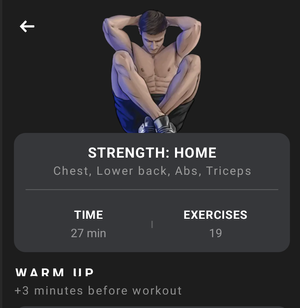
Smarter. Smoother. Faster. Be The First To Try The New Dr. Muscle
Meet Dr. Muscle X: The Future of AI Personal Training. Early Preview Now Open.

Meet Dr. Muscle X: The Future of AI Personal Training. Early Preview Now Open.

Power meets simplicity. Innovation meets iron. Right on your wrist.

No hype, no gimmick—just science-backed workouts that grow with you using AI

An honest look at MacroFactor and results from 9 users of the app: is it worth it in 2025?


Honest look with pros and cons, screenshots, price, and more
Master the Cable Seated Crunch to build core strength, improve stability, and maximize abdominal muscle engagement with this versatile exercise.
Full release notes (version 3.2507.1111) * Fixed: Cannot resume login after account creation fails * Fixed: Cannot see long messages in AI chat input field * Fixed: Cannot create custom workouts and programs * Fixed: 4 crashes in rare cases Coming soon * Apple Watch app
Master the Cable Tuck Crunch to build core strength, enhance stability, and achieve a defined midsection with this versatile cable machine exercise.
Enhance your core stability and rotational strength with the cable twist exercise—perfect for improving athletic performance and injury prevention.
Master Boat Pose (Navasana) to build core strength, enhance balance, and support hypertrophy in your fitness routine.
Master cable woodchops with proper form and technique to strengthen your core, improve rotational power, and elevate your functional fitness routine.
Unlock the full-body benefits of mountain climbers with expert tips, form breakdowns, and advanced variations to boost your fitness and core strength.
Unlock the full benefits of mountain climber exercises with expert technique tips, variations, and essential guidance to enhance your bodyweight workout routine.
Explore how climber taps can enhance your fitness routine, improving cardiovascular endurance, strength, and core stability through this dynamic full-body exercise.
Master the close grip pulldown to build back strength, improve posture, and enhance your upper body workout with tips and variations.